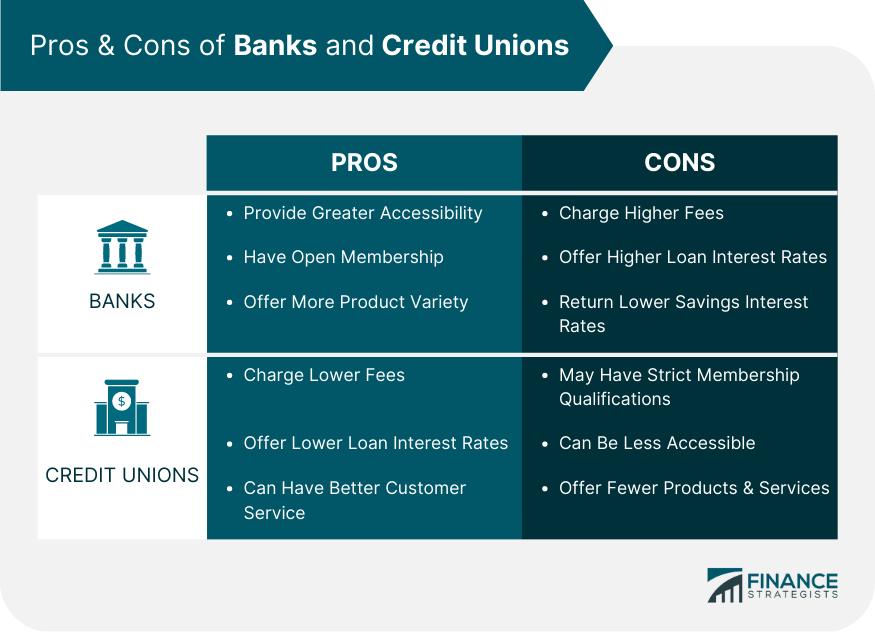Federal Credit Union: Top Quality Financial Solutions and Assistance in Wyoming
Federal Credit Union: Top Quality Financial Solutions and Assistance in Wyoming
Blog Article
The Ultimate Guide to Understanding Credit Scores Unions

Cooperative credit union stand as distinct monetary entities, rooted in principles of common assistance and member-driven operations. Nevertheless, beyond their fundamental worths, comprehending the complex functions of lending institution entails a deeper expedition. Deciphering the complexities of membership qualification, the advancement of services offered, and the distinctive advantages they bring calls for a comprehensive examination. As we navigate through the intricacies of lending institution, an informative journey waits for to shed light on these member-focused institutions and just how they vary from standard financial institutions.
What Are Lending Institution?
Lending institution are member-owned monetary institutions that provide a variety of financial solutions to their participants. Unlike conventional banks, cooperative credit union operate as not-for-profit organizations, suggesting their main focus gets on serving their members as opposed to optimizing revenues. Members of a credit report union generally share a common bond, such as functioning for the same employer, belonging to the same community, or belonging to the exact same organization.
One of the key advantages of lending institution is that they often supply greater rate of interest rates on savings accounts and reduced rates of interest on fundings compared to banks. Hybrid Line of Credit. This is because cooperative credit union are structured to benefit their participants directly, enabling them to pass on their revenues in the type of better rates and fewer costs. Furthermore, credit history unions are known for their individualized customer service, as they focus on building partnerships with their members to understand their one-of-a-kind monetary demands and goals
Background and Evolution of Credit Rating Unions
The origins of member-owned financial cooperatives, recognized today as lending institution, trace back to a time when communities looked for alternatives to standard banking institutions. The idea of cooperative credit union come from the 19th century in Europe, with Friedrich Wilhelm Raiffeisen typically credited as the pioneer of the participating financial movement. Raiffeisen established the initial recognized lending institution in Germany in the mid-1800s, emphasizing community assistance and self-help concepts.
The advancement of cooperative credit union proceeded in North America, where Alphonse Desjardins developed the initial cooperative credit union in Canada in 1900. Quickly after, in 1909, the first U.S. cooperative credit union was formed in New Hampshire by a group of Franco-American immigrants. These early lending institution operated on the fundamental principles of shared support, autonomous control, and member ownership.
Over time, cooperative credit union have expanded in appeal worldwide because of their not-for-profit framework, concentrate on serving participants, and using affordable monetary services and products. Today, cooperative credit union play a crucial role in the financial industry, offering obtainable and community-oriented banking alternatives for people and services alike.

Subscription and Eligibility Requirements
Membership at a credit history union is normally limited to people fulfilling certain eligibility requirements based on the institution's founding principles and regulative demands. Some credit scores unions may only serve people that work or live in a certain location, while others may be customized to workers of a certain company or participants of a specific association.
Additionally, lending institution are structured as not-for-profit organizations, implying that their key goal is to offer their members instead than produce profits for investors. This concentrate on member solution typically translates right into more tailored interest, lower charges, and competitive passion rates on savings and financings accounts. By satisfying the qualification requirements and becoming a participant of a lending institution, individuals can access a variety of economic products and solutions tailored to their particular demands.
Services and Products Used
One of the essential facets that sets lending institution apart is the diverse variety of economic services and products they supply to their members. Lending institution generally supply typical banking services such as cost savings and examining accounts, lendings, and bank card. Participants Credit Union in Wyoming can also gain from investment solutions, consisting of retired life accounts and economic preparation assistance. Numerous lending institution supply affordable rate of interest on savings accounts and fundings, along with reduced costs contrasted to typical financial institutions.
Moreover, lending institution often provide hassle-free online and mobile financial choices for members to conveniently handle their financial resources. They may offer rewards such as common branching, enabling members to access their accounts at various other credit score unions across the country. Some credit unions additionally supply insurance policy products like vehicle, home, and life insurance policy to assist members shield their possessions and loved ones.

Advantages of Banking With Cooperative Credit Union
When considering monetary establishments, exploring the advantages of financial with credit scores unions exposes one-of-a-kind benefits for members seeking tailored service and competitive rates. Unlike huge banks, credit history unions are member-owned and focus on structure solid relationships with their members. In general, banking with a debt union can provide a more individualized, cost-efficient, and member-centric financial experience.
Final Thought
In conclusion, credit score unions stand out as member-owned monetary establishments that prioritize offering their participants over making the most of profits. With origins dating back to 19th century Europe, credit scores unions comply with principles of mutual support and member possession.
Credit score unions are member-owned economic establishments that use a variety of banking solutions to their participants. The concept of debt unions stem in the 19th century in Europe, with Friedrich Wilhelm Raiffeisen usually attributed as the pioneer of the participating financial motion.The evolution of credit score unions continued in North America, where Alphonse Desjardins developed the initial credit score union in Canada in 1900. Credit rating unions generally give standard banking solutions such as savings and inspecting accounts, loans, and credit cards.When thinking about financial organizations, checking out the advantages of financial with debt unions reveals special benefits for members seeking individualized solution and affordable rates.
Report this page